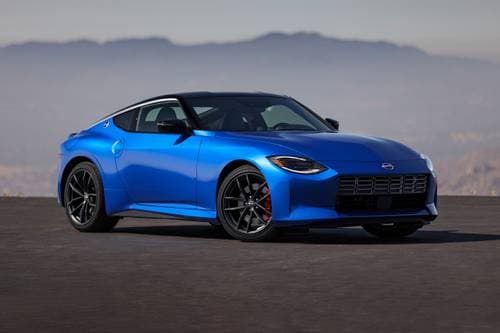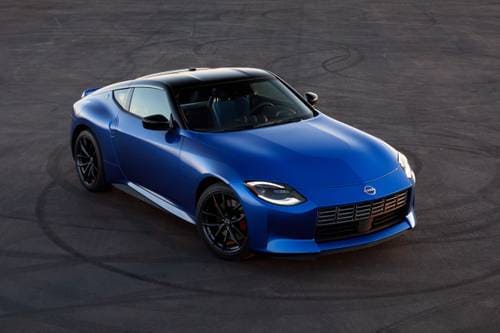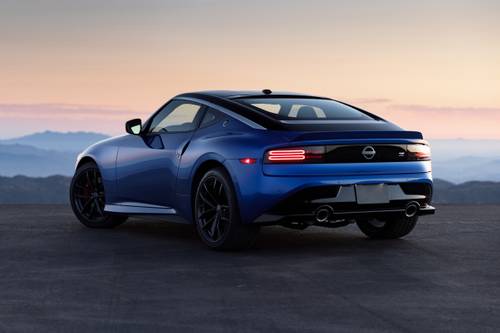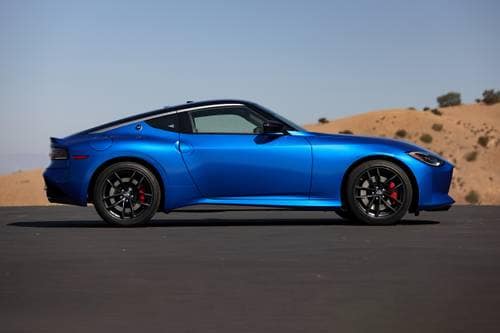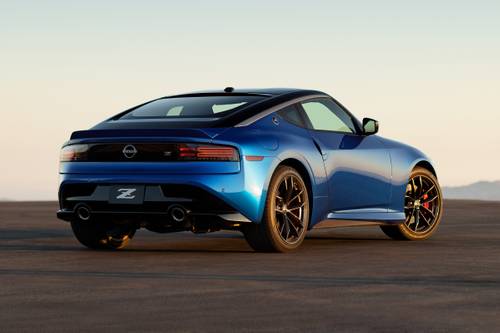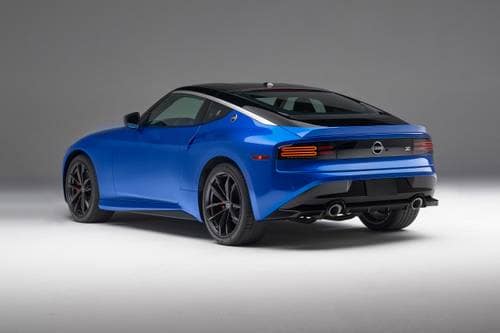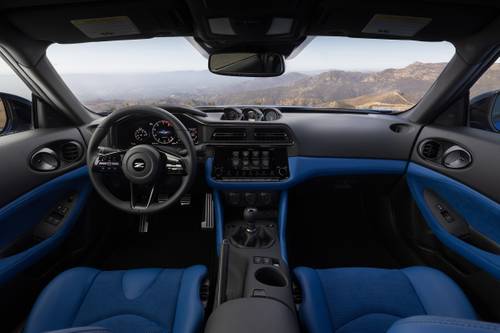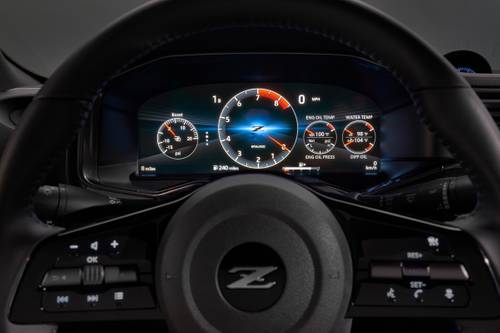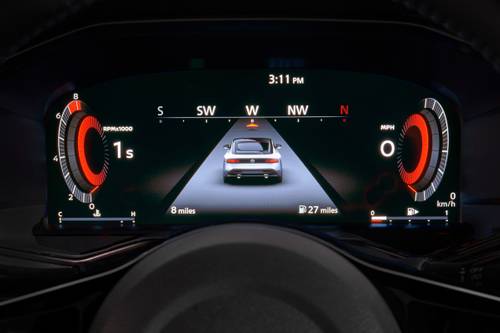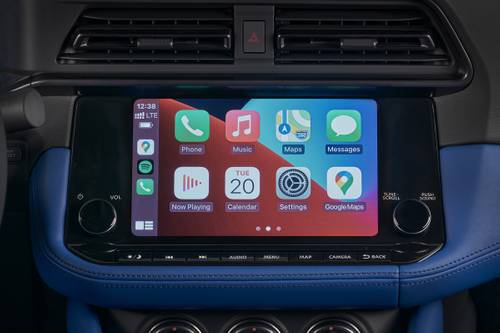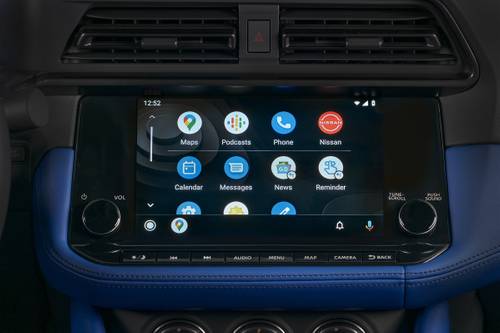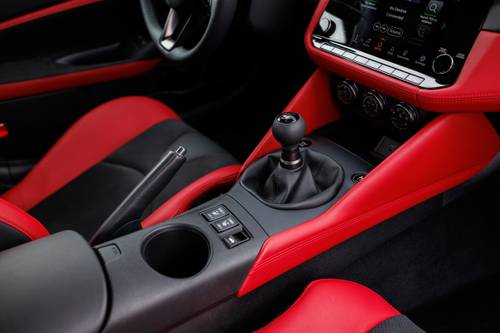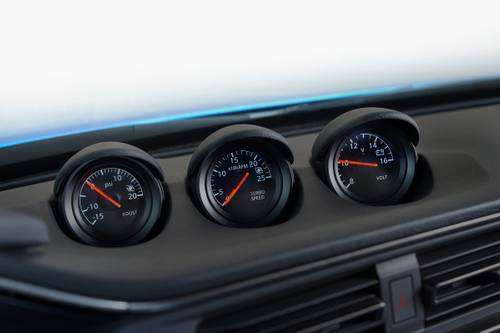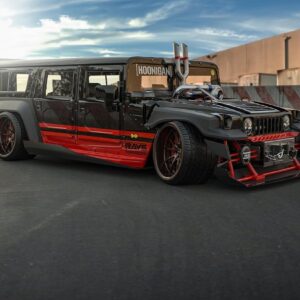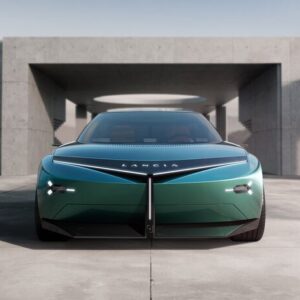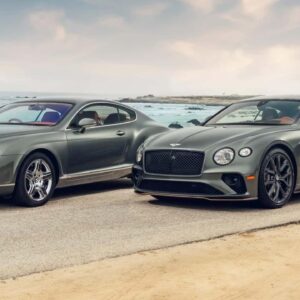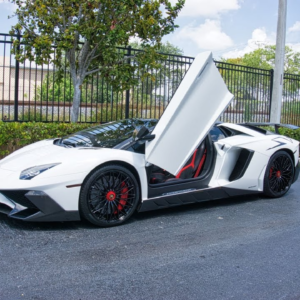Give Nissan credit for its efforts overhauling the old 370Z, even if the results are mixed.
What’s old is new again? The 2023 Nissan Z takes that phrase literally, as it represents yet another rehash of a rear-wheel-drive platform dating back to the 2003 350Z. Nissan reanimated those old bones for the 370Z in 2010, and here they are again for the new, numberless Z.
Next to its mashup of retro Z styling cues—the nose is pure, original 240Z, while the tail is more 300ZX—the car also trades the 370Z’s 3.7-liter V-6 for a 400-hp 3.0-liter twin-turbo V-6. The interior inherits a host of carryover gauges, switchgear, and other elements presented in a new arrangement with some fresh displays. Judges grappled with how the Z’s obvious steps forward relative to its predecessor clashed with the coupe’s vague sense of oldness. As associate editor Billy Rehbock put it, “The new Z is a cyberpunk king, an odd blend of futuristic looks and tech—big displays that no Z has ever had before—and an old-school platform.”
Nissan upgraded the Z’s platform, but the extra bracing and newer interior bits—along with the new V-6—raise the curb weight accordingly, dulling the impact of the 400 hp on tap. The Z’s 4.9-second 0-60-mph acceleration outruns the 332-hp 370Z, but it merely matches that of the 350-hp 370Z NISMO model. At least the new engine is smoother, though numerous judges agreed with Detroit editor Alisa Priddle when she said she “wanted a good engine note from a car like this and was disappointed.”

Ride quality was a surprising bright spot. That comes at the expense of some sharpness, as guest judge Chris Theodore observed: “The steering is not terribly communicative, and the brakes are just OK. The engine revs nicely, but the shifter is a tad sloppy, and the car bounces around a bit when pushed.” If that sounds like middling praise, he added that it’s nonetheless “an improvement over the last-generation Z.” Ouch.
The problem with the Z is that it lives under a devil’s bargain. Nissan could have designed a totally new car; pragmatism—the notion that two-door sporty cars don’t sell well anymore and are therefore tough to justify—led to recycling of yesterday’s Z cars for this new one.
Reactions to this choice were mixed. Priddle said she’s “OK with a modified version of the old 370Z’s architecture because otherwise the financial case might have precluded this from happening at all.” Others thought Nissan should have taken the market’s hint and spent its money elsewhere. Likening the Z’s “redesign” to a cheap home flip, features editor Christian Seabaugh didn’t pull punches, declaring, “I don’t want to crap on Nissan for making something for enthusiasts, but it feels like the bare minimum was done here.”
In the end, it was that nagging sense that the Z is already dated despite being a new car that held it back in our COTY criteria. Scoring poorly in engineering excellence and design advancement, the Z made up ground with value and performance of intended function. But whenever one of our judges found a way to get excited about it, the Z would find a way to remind them to calm down, whether through its driveline clunking at low speeds or the interior trim and carryover switchgear failing to impress. The familiar looks and experience are somewhat charming, but a car that feels this old simply can’t move the needle enough to score our Calipers.
